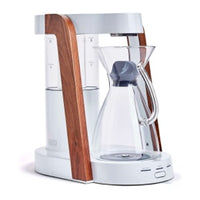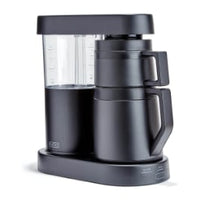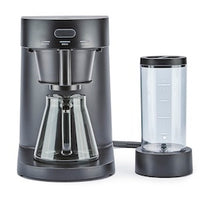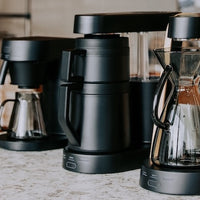When Perfect Ratios Still Make Bad Coffee
Key Takeaways
-
Perfect coffee ratios don’t guarantee great flavor — other variables matter equally
-
Water quality, grind consistency, and brew temperature play critical roles
-
Freshness of beans significantly impacts the final cup
-
Brewing method and timing can override the benefits of a precise ratio
-
Balanced brewing involves managing all factors, not just measurements
Many coffee enthusiasts swear by the “golden ratio” of coffee to water, often cited as 1:16 — one part coffee to sixteen parts water. While this is a reliable guideline, it’s not a magic formula. Even if you measure perfectly, your coffee can still taste dull, bitter, or unbalanced. The reason? Brewing is a complex interplay of variables, and the ratio is just one piece of the puzzle.
Why Ratio Alone Isn’t Enough
The coffee-to-water ratio determines strength, but it doesn’t account for extraction quality. Extraction refers to how well water dissolves the desirable compounds from coffee grounds. A perfect ratio won’t fix problems caused by poor extraction.
Examples of Poor Results Despite Correct Ratios:
-
Under-extraction: Coffee tastes sour or thin because brewing time was too short or the grind was too coarse.
-
Over-extraction: Coffee tastes bitter and harsh because water spent too long in contact with the grounds or the grind was too fine.
-
Flat flavor: The ratio was correct, but stale beans or poor water quality muted the taste.
The Role of Grind Consistency
Grind size and uniformity are critical for extraction control:
-
Too coarse: Water flows too quickly, missing flavor compounds
-
Too fine: Water moves too slowly, extracting bitter notes
-
Inconsistent grind: Some particles over-extract while others under-extract, leading to muddled flavor
Even with a perfect ratio, inconsistent grind size can ruin balance.
Water Quality: The Overlooked Variable
Water makes up over 98% of your cup, so its quality is just as important as the coffee itself. Using tap water that’s too hard or too soft can:
-
Mask delicate flavors
-
Add unwanted mineral or chlorine tastes
-
Interfere with proper extraction
Filtered water with balanced mineral content brings out the best in your beans, ensuring your perfect ratio translates into a flavorful cup.
Temperature Control Matters
Even with the ideal ratio and grind, incorrect brewing temperature can sabotage flavor:
-
Too low (<195°F / 90°C): Under-extraction, resulting in sourness and weak body
-
Too high (>205°F / 96°C): Over-extraction, creating bitterness and harshness
Consistent temperature throughout the brew cycle is essential for unlocking flavor potential.
Bean Freshness: The Time Factor
The best ratio in the world won’t save coffee brewed with stale beans. Freshly roasted beans have vibrant aromatics and balanced flavor, but these degrade over time. After 3–4 weeks, even perfectly measured coffee can taste flat.
Signs Your Beans Are Past Their Prime:
-
Weak aroma even after grinding
-
Dull, muted flavor
-
Uneven extraction due to degassing issues
Brewing Method Compatibility
Different brewing methods extract differently, even when using the same ratio:
-
Pour-over: Requires precise pouring technique for even extraction
-
French press: Longer contact time changes how flavors develop
-
Espresso: Uses a much lower ratio (around 1:2) but depends heavily on grind, tamp, and pressure
Applying a generic “perfect ratio” without adjusting for method can lead to disappointing results.
The Impact of Brew Time
Brew time directly influences extraction:
-
Shorter than ideal: Underdeveloped flavors
-
Longer than ideal: Overdeveloped bitterness
Ratios can’t compensate for incorrect timing — they work best when paired with proper brew duration.
Troubleshooting Bad Coffee Despite Correct Ratios
If your measurements are spot-on but your coffee still disappoints, review these steps:
-
Check grind size and consistency — Use a quality burr grinder.
-
Test water quality — Switch to filtered or mineral-balanced water.
-
Measure brew temperature — Stay within the 195–205°F range.
-
Assess bean freshness — Buy in smaller quantities and store properly.
-
Adjust brew time — Fine-tune based on taste feedback.
Why Perfect Ratios Are Still Useful
Despite their limitations, ratios are essential for consistency. They eliminate guesswork and provide a starting point for dialing in other variables. Think of the ratio as your foundation — it needs to be solid, but a house is more than just its foundation.
The Ratio Coffee Approach
A coffee machine from Ratio Coffee delivers more than accurate ratios — it ensures water temperature precision, even saturation, and consistent extraction. This means you can focus on perfecting grind, beans, and water while the machine maintains brewing stability.
Bringing It All Together
Perfect ratios are only one element of a balanced brew. Without attention to grind, water quality, temperature, freshness, and brew time, even the most precise measurements can produce lackluster results. Mastering coffee requires a holistic approach where all elements work together.
Frequently Asked Questions
Can bad water ruin good coffee?
Yes — water with too many or too few minerals can distort flavor and limit extraction.
Does grind consistency matter more than ratio?
They are equally important, but inconsistent grind often has a more noticeable impact on taste.
Should I adjust my ratio for different brew methods?
Yes — certain methods, like espresso or cold brew, require different ratios for optimal flavor.
How can I tell if my coffee is over- or under-extracted?
Over-extraction tastes bitter and harsh; under-extraction tastes sour and thin.
If my ratio is right, why is my coffee still bland?
Likely due to stale beans, poor water, or incorrect brew temperature.
 Ratio Eight S2
Ratio Eight S2
 Ratio Eight Original
Ratio Eight Original
 Ratio Six
Ratio Six
 Ratio Four
Ratio Four
 Compare Machines
Compare Machines






